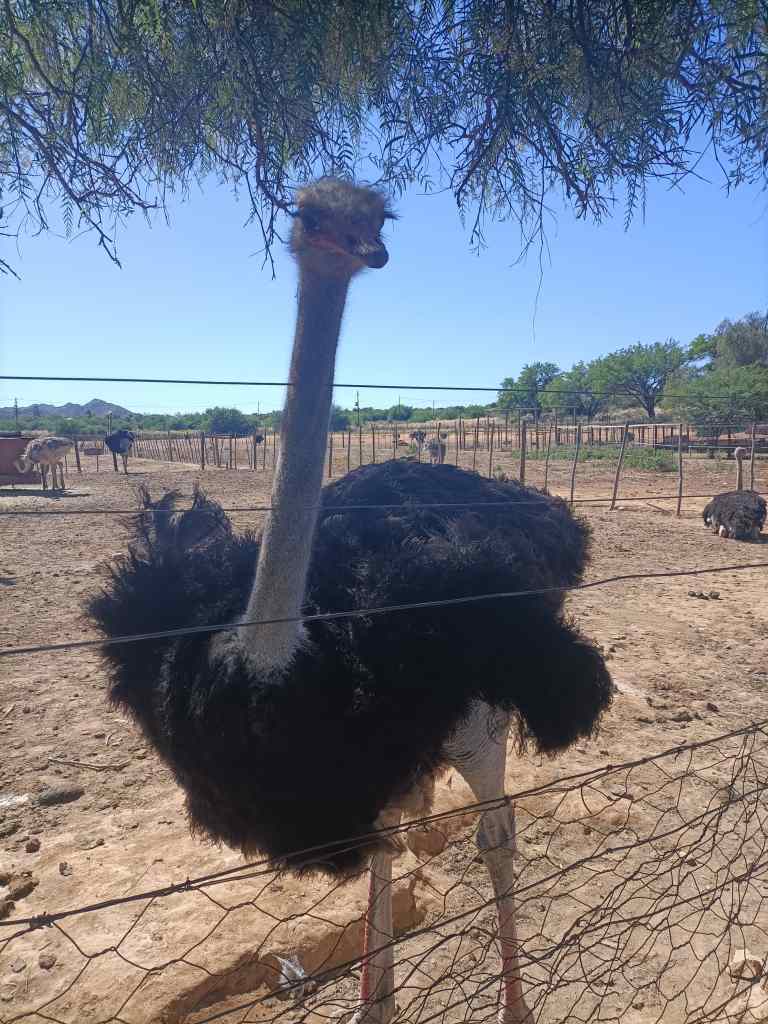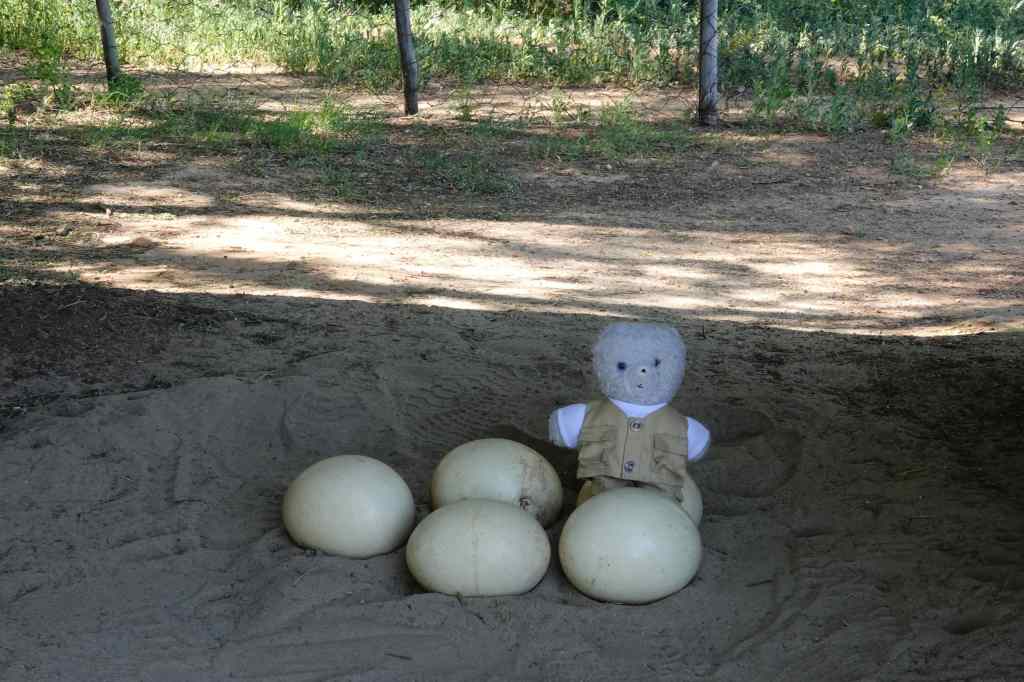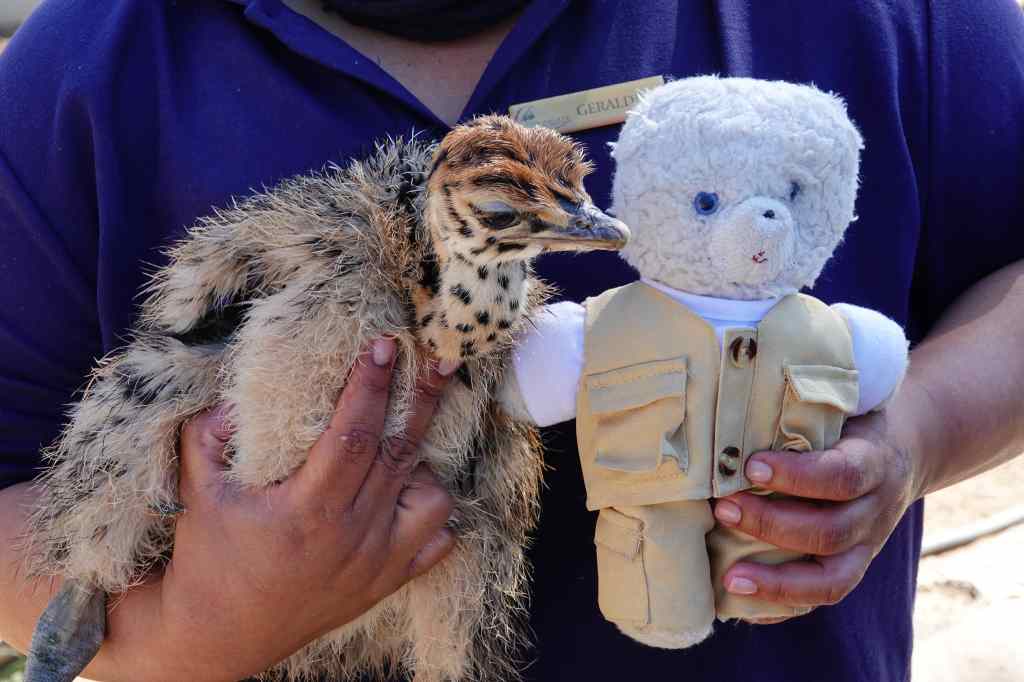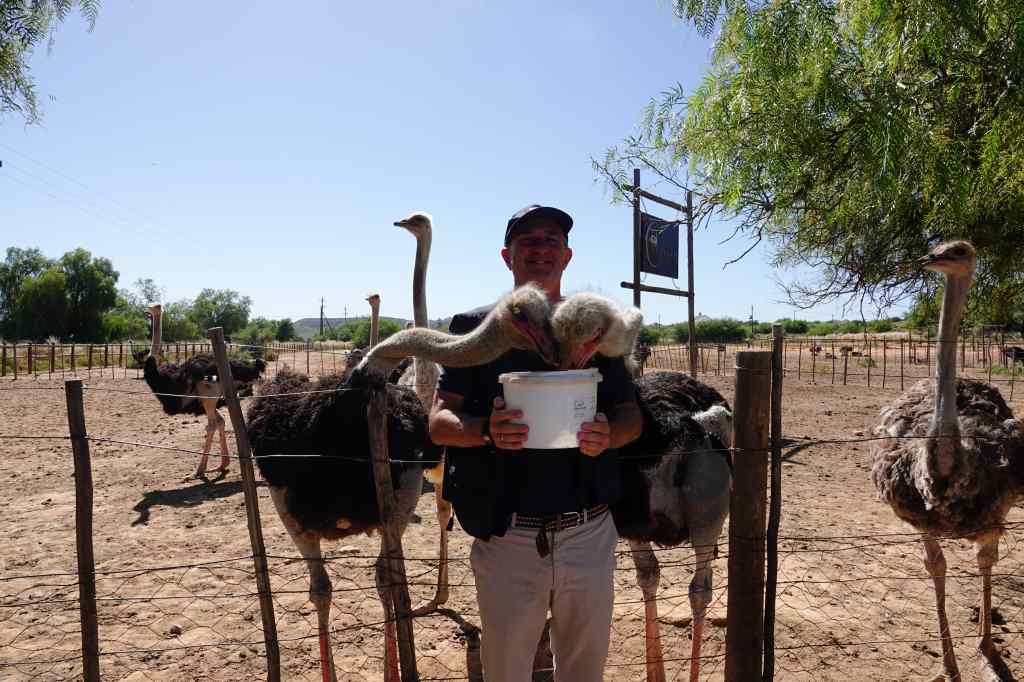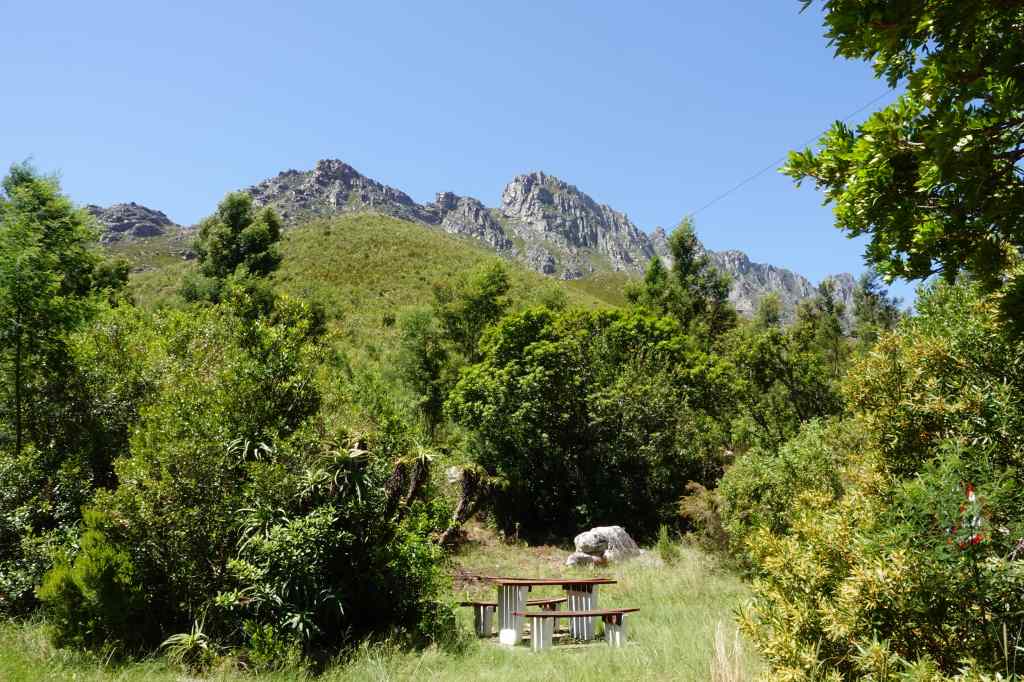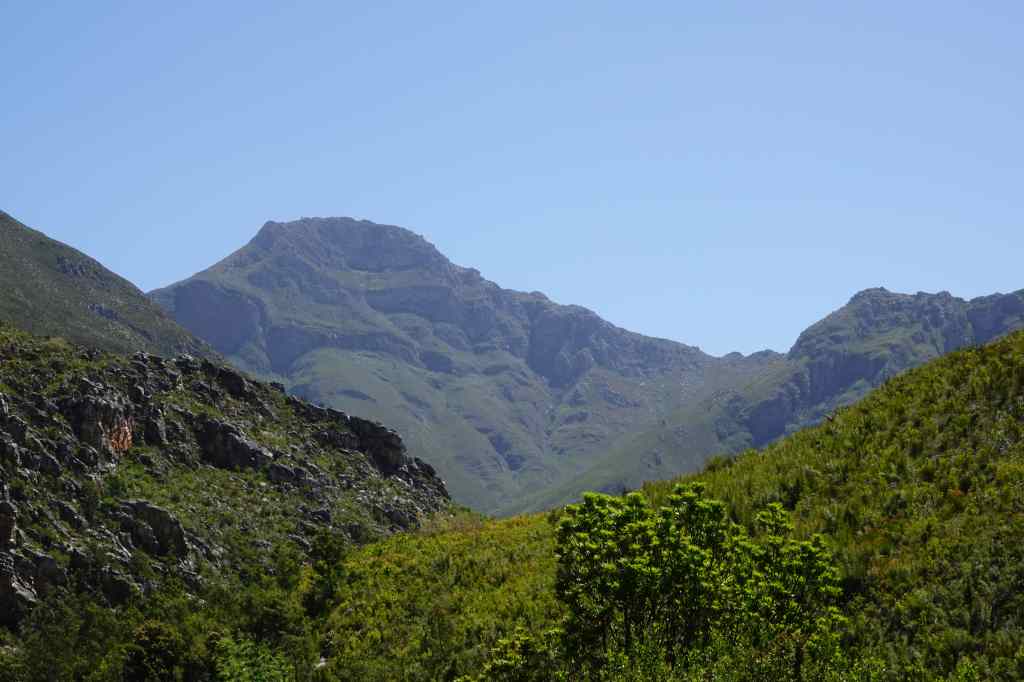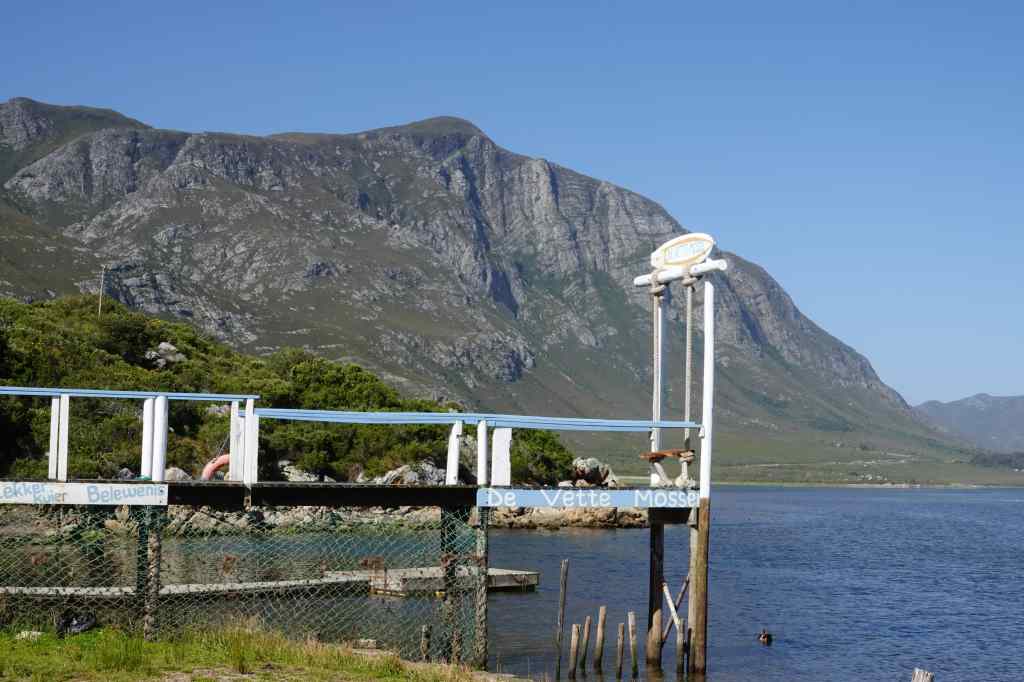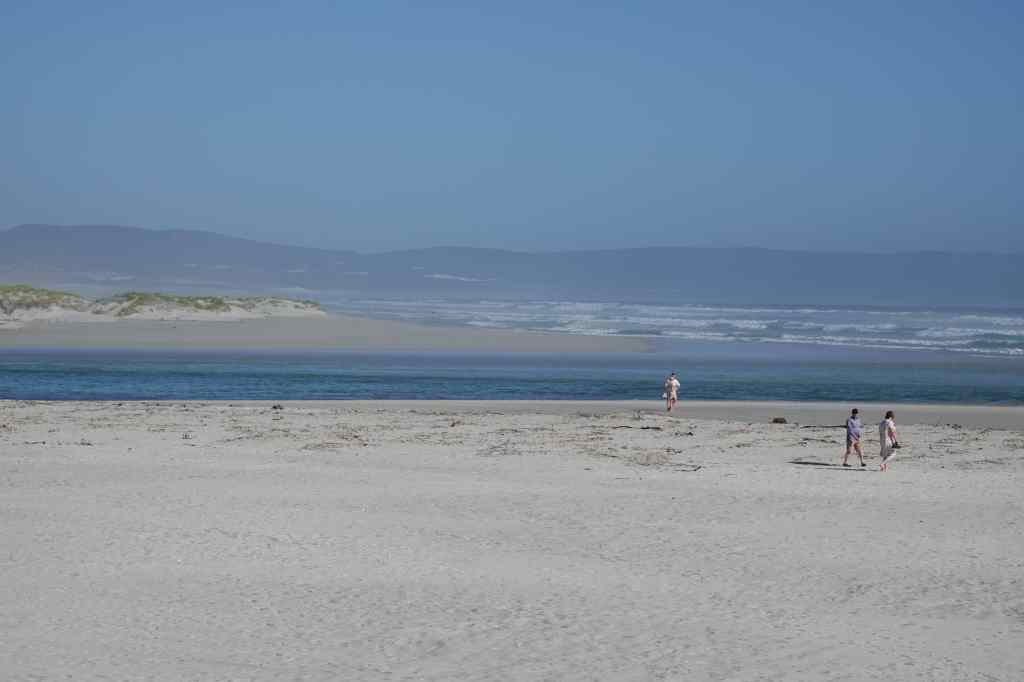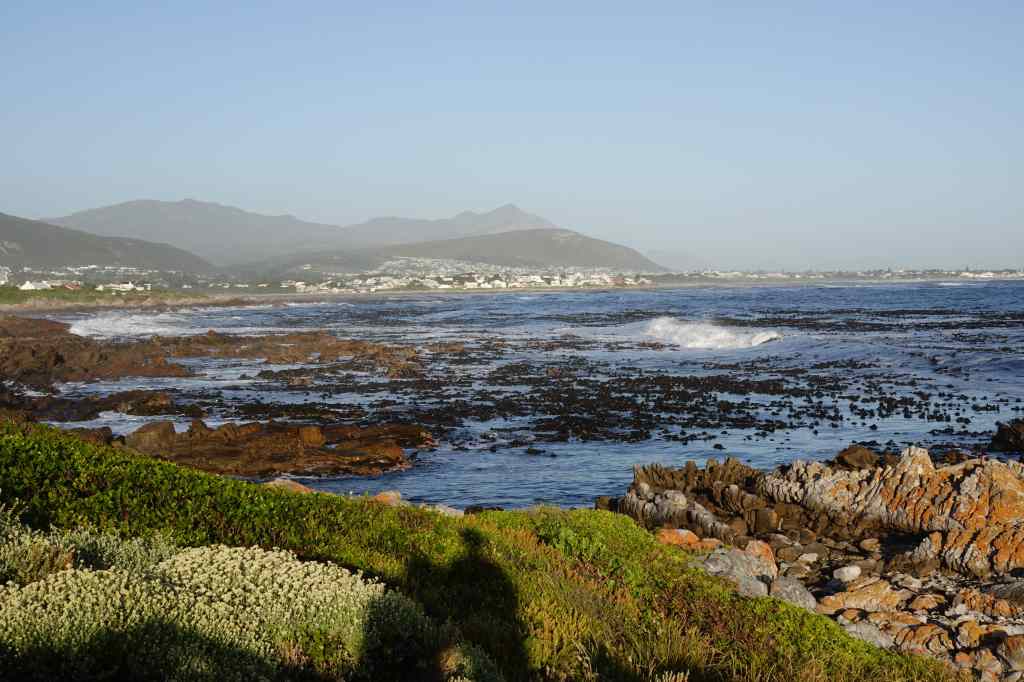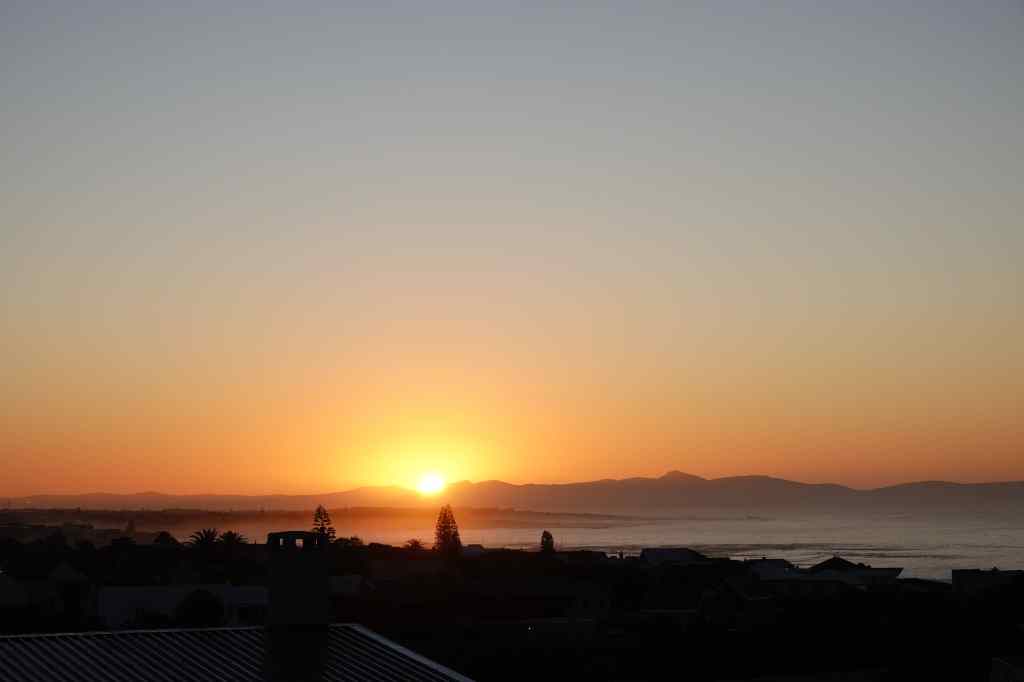
The next day I woke early and enjoyed watching the sunrise over the mountains behind the town of Hermanus. Then I got ready, had breakfast on my terrace and set off to visit the town, which is famous for being the best place in the world to see whales from the shore. The most frequently seen whale is the Southern Right Whale, which comes to the area to mate from August to November. This species of whale was given its name by whalers, which considered it the “right” whale to hunt, since it spends long periods of time on the surface of the water. At the town’s sea front, I met this cheerful fellow – Hermanus’ “whale crier”. He scans the sea for whales and blows his horn if he sees anyway.
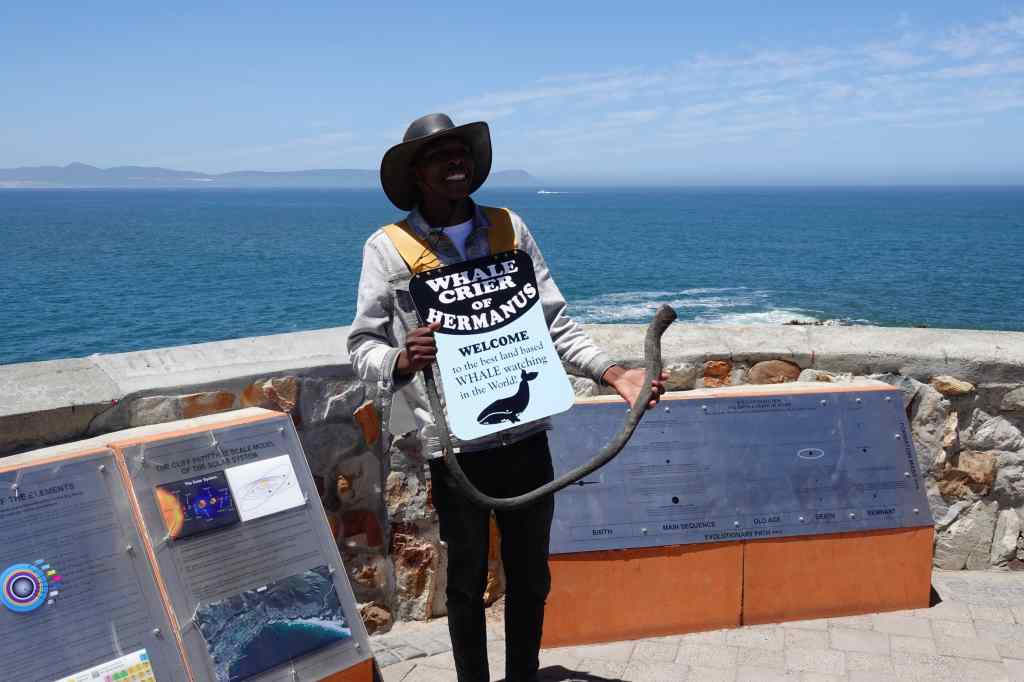
I was quite pleased that I managed to see a whale before he did. It was clearly visible through my binoculars, although it still looks a bit small in photos……

Apparently whales sometimes come to within 5 metres of the shore in Hermanus, but I was not so lucky. I settled down in a sea front café, scanning the sea for more whales whilst enjoying a cappuccino. In the distance at the other end of the bay, another whale duly appeared. This one appeared to be in playful mood, and breached right out of the water, making a big splash on its return. Again, it was frustratingly hard to capture the whale’s play on film.

The whale crier had told me that the best time for sightings was the morning or evening, so as noon approached I decided to go to a walk along Hermanus’ popular cliff path. It was a very pretty route, with some artwork….

…. Great views of the bay……..
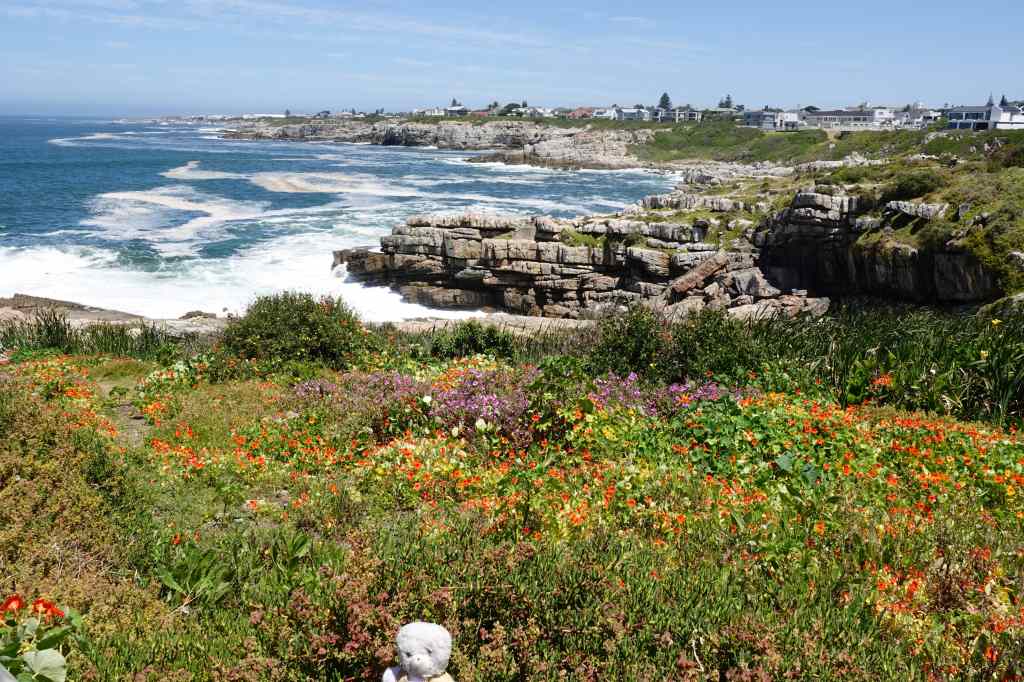
……and some unusual and cute little creatures formally known as rock hyrax but informally called dassies. They look like rabbits, but are in fact the closest living relative of…the elephant.
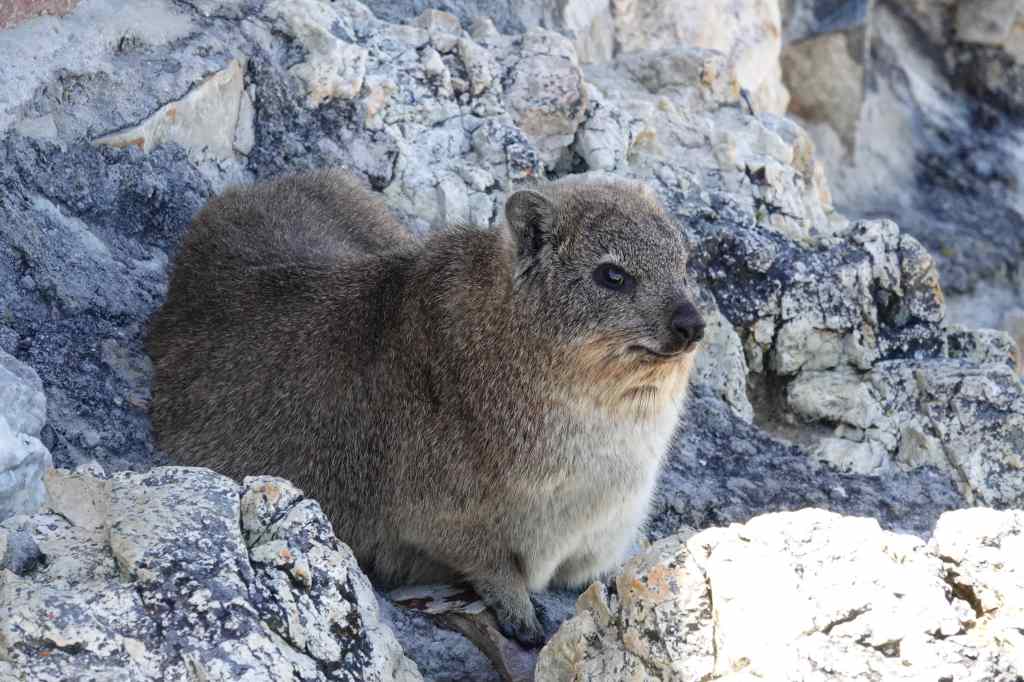
One of the dassies came to warn me about the danger from eagles. I thanked him, looked up anxiously, and hurried on.
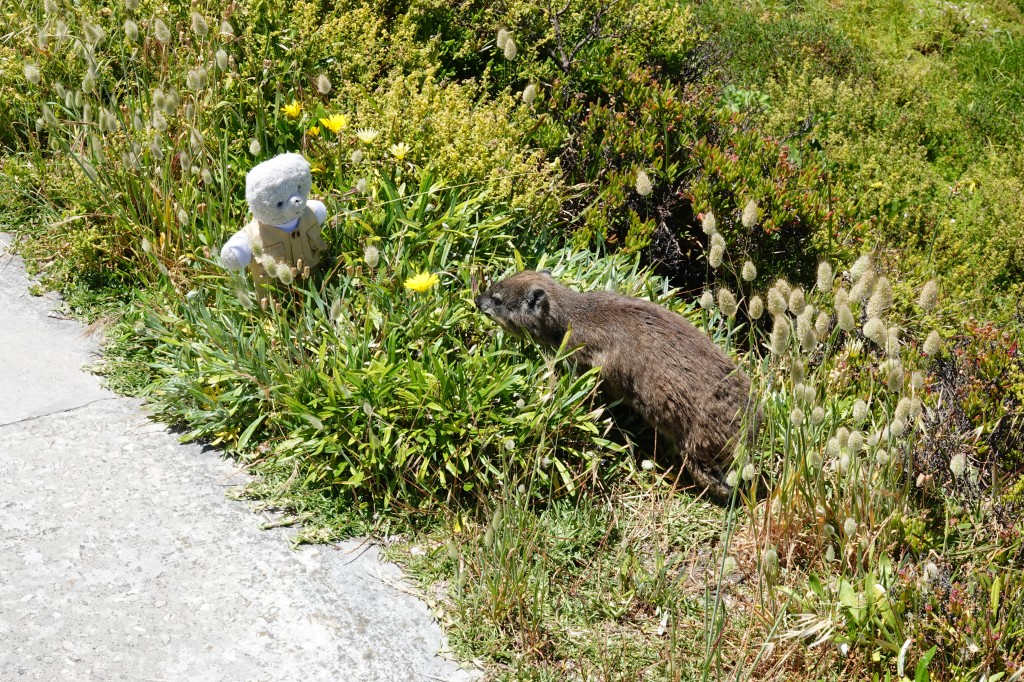
I’d spent a very pleasant half day in Hermanus, and could have spent a lot longer in the area. But the deadline for returning my car was looming, so I set off for the last leg of my holiday – Cape Town. As I approached the city, the traffic became quite dense, and at first, I found the place quite intimidating. Big SUVs crowded the road, and beggars gathered at road junctions to ask for money. I was relieved when I checked into my flat and could head out to a nearby bar to enjoy a beer. I asked the waitress if it was safe to walk around at night – and the answer was a firm “NO”. So I bought some food to cook at home and headed back before sunset to enjoy my flat’s direct view of the iconic Table Mountain, which sits right in the middle of the city.
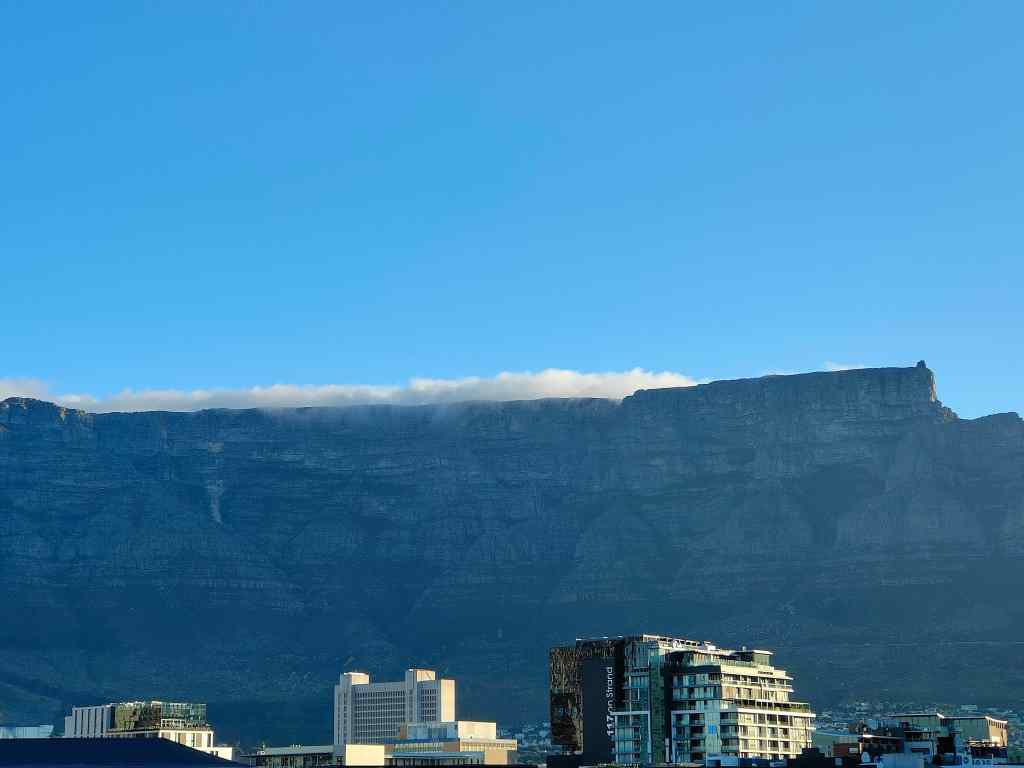
Cape Town had intrigued me. Visually, it was a stunning city. But it also had an edge, and clearly had problems with crime and poverty. I was looking forward to exploring it over the next few days.
Next Post – Cape Town – Kirstenbosch Gardens and Table Mountain
Previous Post – Oudtshoorn’s ostrich farms and on to Hermanus
